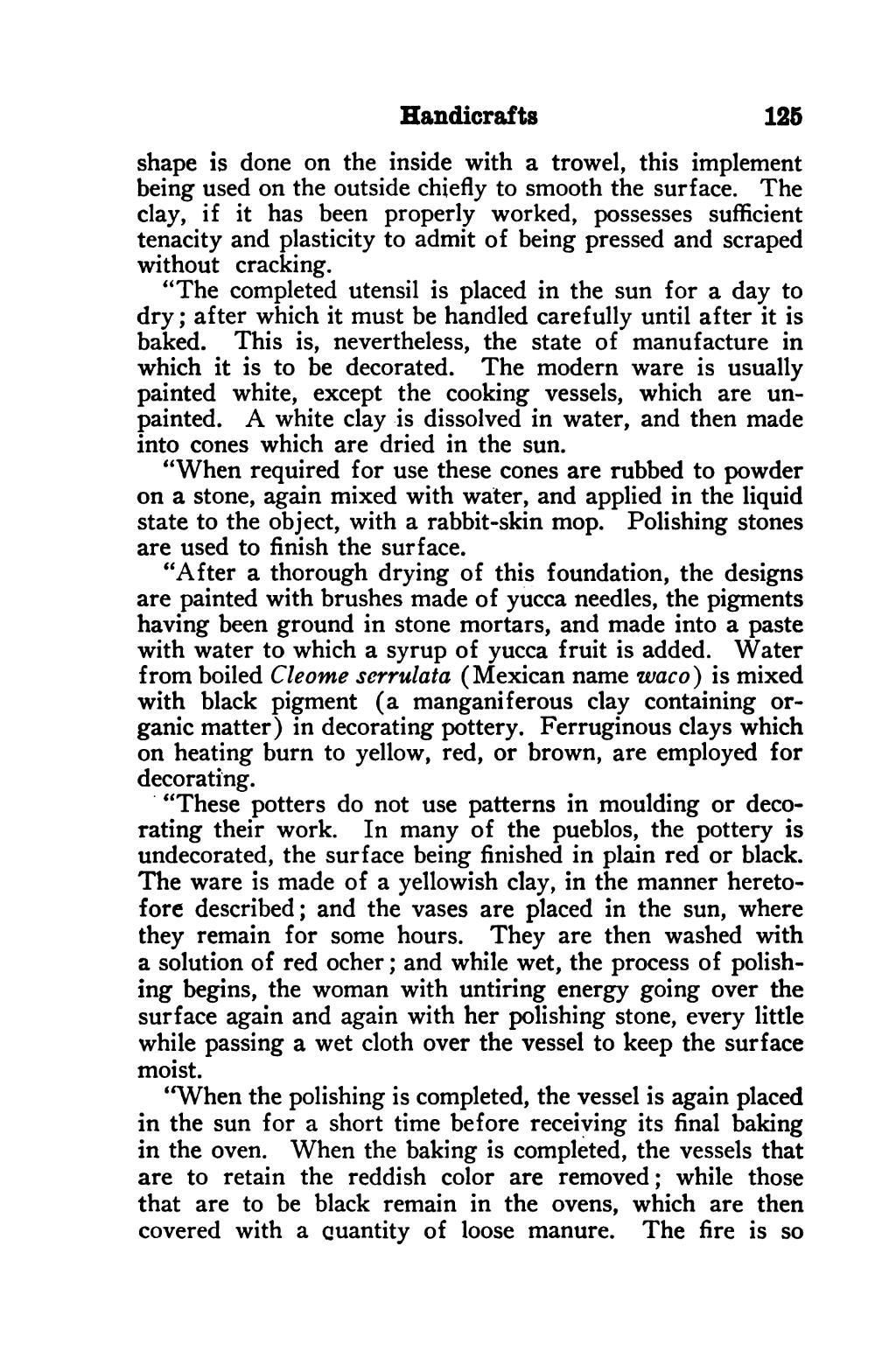Handicrafts 125 shape is done on the inside with a trowel, this implement being used on the outside chiefly to smooth the surface. The clay, if it has been properly worked, possesses sufficient tenacity and plasticity to admit of being pressed and scraped without cracking. “The completed utensil is placed in the sun for a day to dry; after which it must be handled carefully until after it is baked. This is, nevertheless, the state of manufacture in which it is to be decorated. The modern ware is usually painted white, except the cooking vessels, which are un- painted. A white clay is dissolved in water, and then made into cones which are dried in the sun. “When required for use these cones are rubbed to powder on a stone, again mixed with water, and applied in the liquid state to the object, with a rabbit-skin mop. Polishing stones are used to finish the surface. “After a thorough drying of this foundation, the designs are painted with brushes made of yucca needles, the pigments having been ground in stone mortars, and made into a paste with water to which a syrup of yucca fruit is added. Water from boiled Cleome serrulata (Mexican name waco) is mixed with black pigment (a manganiferous clay containing or- ganic matter) in decorating pottery. Ferruginous clays which on heating burn to yellow, red, or brown, are employed for decorating. “These potters do not use patterns in moulding or deco- rating their work. In many of the pueblos, the pottery is undecorated, the surface being finished in plain red or black. The ware is made of a yellowish clay, in the manner hereto- fore described; and the vases are placed in the sun, where they remain for some hours. They are then washed with a solution of red ocher ; and while wet, the process of polish- ing begins, the woman with untiring energy going over the surface again and again with her polishing stone, every little while passing a wet cloth over the vessel to keep the surface moist. “When the polishing is completed, the vessel is again placed in the sun for a short time before receiving its final baking in the oven. When the baking is completed, the vessels that are to retain the reddish color are removed; while those that are to be black remain in the ovens, which are then covered with a quantity of loose manure. The fire is so
Stránka:roll 1931.djvu/141
Z thewoodcraft.org
Tato stránka nebyla zkontrolována
